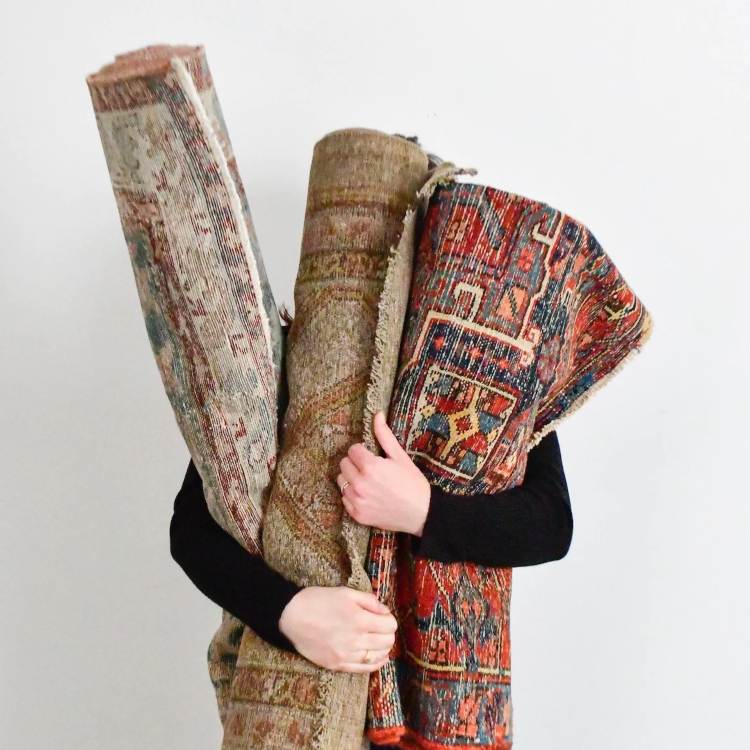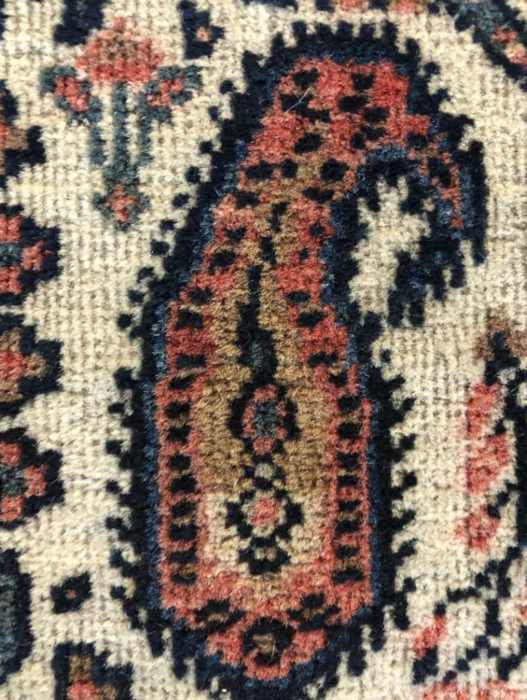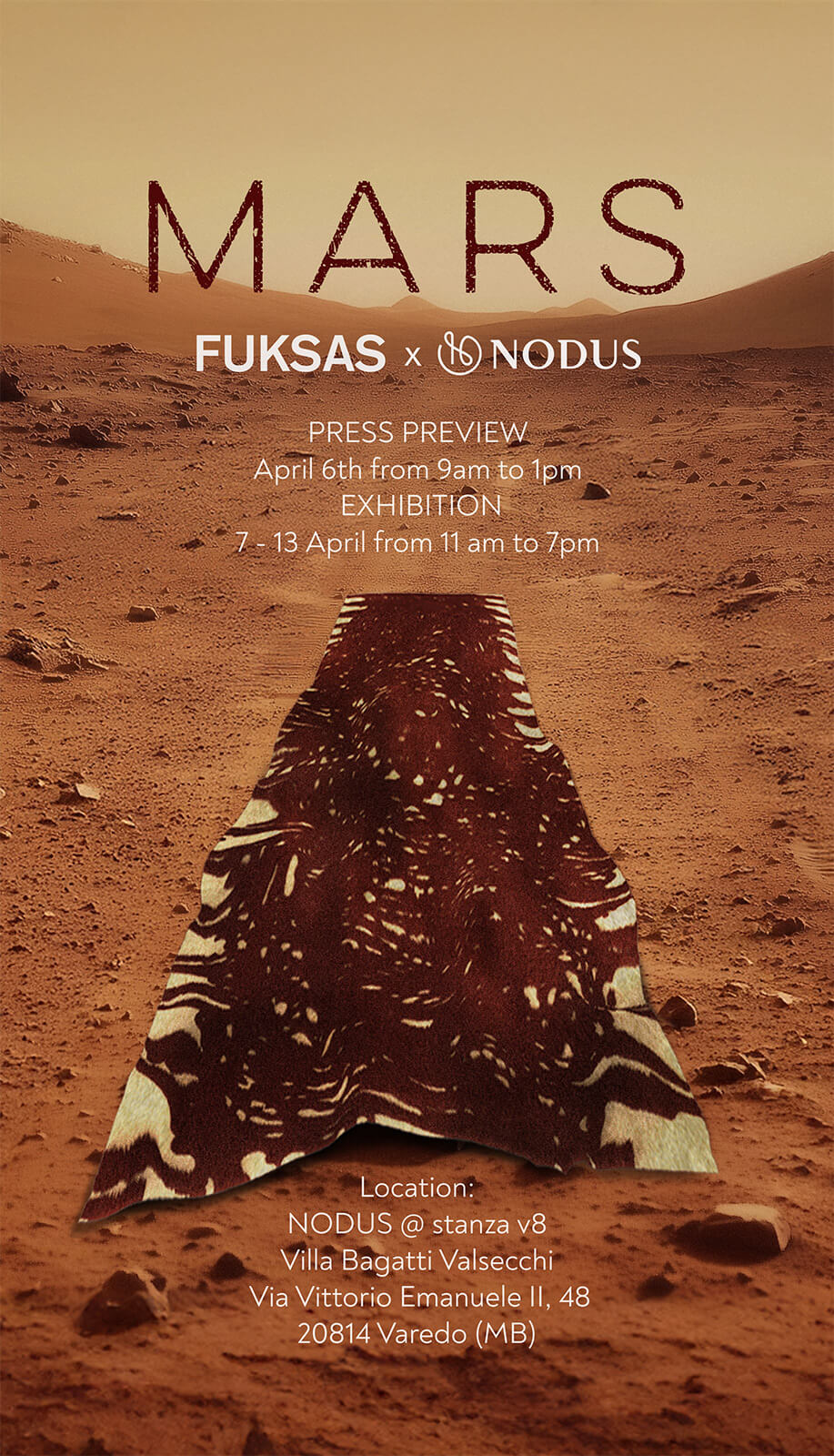How to identify origin rug? Tips to find out the country of origin right away
Materials and techniques — Jul 22.2023
When you are about to buy a new luxury carpet, especially if you are leaning towards buying an antique or oriental model, it is important to understand how to identify origin rug and what aspects should be analysed.
By checking the design, the type of workmanship and the characteristics of the different parts that make up the piece, one can get a precise idea of its origin and, not infrequently, also of its economic, craft and artistic value.
So, how to identify origin rug? Find out by reading our detailed guide.
What needs to be assessed to understand where a carpet comes from?
To be able to identify the origin of a carpet, the most important element to analyse is the design of the product.
The design is in fact the element of the carpet that provides the most clues as to its origin, as each culture and region has refined its own unique and recognisable style over time. The decorative motifs used, the colours chosen for the yarns and the symbols drawn on the carpets tell a lot about the history of the artefact and that of the people who made it.
Persian carpets are the easiest to identify. The design is characterised by intricate patterns, frequently featuring stylised flowers or scenes from everyday life, surrounded by elaborately worked borders and rich colours.
The other major category of Oriental carpets is Turkish carpets. Typically, these are more geometric in appearance and characterised by the repetition of characteristic patterns and motifs that differentiate the different schools of production and major Turkish cities.
Moving from the Middle East to North Africa, we can also consider Berber carpets. Their designs are typically less elaborate than Persian and Turkish carpets and are characterised by the presence of tribal and abstract designs and a scarce use of colours.
Any other tips on how to identify origin rug? Design analysis also allows us to identify carpets of Chinese, Tibetan and Indian origin. The use of bright colours and decorative motifs typical of the culture and folklore of these populations makes them original and easy to place geographically.
Observing the artefact, one can also see that the use of special natural dyes obtained from plants and minerals is a clue to the origin of the carpet and its processing according to traditional methods, while the presence of colours of synthetic origin shows that the carpet was produced in recent times.

How to identify origin rug by analysing its backside?
After analysing the surface of the carpet to understand the decorative elements used, one can move on to look at the back of the artefact. The part of the product that comes into contact with the floor (or wall) provides useful indications of how the product was processed and the quality of the yarn used.
A keen eye will be able to tell whether the carpet has been knotted by hand or whether it has been industrially produced, for example. The presence of small irregularities in the workmanship or areas where the knots are more or less dense and compact is an important clue in this respect.
Still speaking of knotted carpets, one can tell from the back whether the asymmetrical knot, mainly used in Persia, or the symmetrical knot, typical of Turkish workmanship, was used.
Any other indications on how to identify origin rug? By analysing the back, one can also understand the density of the knots and, consequently, the quality of the specific artefact. As a general rule, the greater the number of knots per square metre, the greater the value of the piece, because it is produced with very fine yarns, with which it is possible to create more defined patterns and obtain carpets with exceptional compactness and strength.
This is especially true for carpets made of wool, which is the most commonly used material in Oriental designs. In some cases, when analysing the carpet, one can see that cotton or silk yarns have been used. Cotton is often used for carpets that have a more practical function and when a certain versatility is required from the product, while silk models are elegant and precious and reserved for prominent personalities in society.
What other elements of the carpet should be analysed to deduce its origin?
To deduce the origin of a carpet, it is essential to understand how it was produced. We have already mentioned the importance of understanding whether an asymmetrical (Persian) or a symmetrical (Turkish) knot was used.
In the case of woven carpets, the main distinction to be made is between kilim, which are reversible, or oushak, which are non-reversible. The kilim is a woven flatweave carpet, traditionally produced in Middle Eastern countries such as Turkey, Iran and Afghanistan. Oushak, on the other hand, is a type of hand-knotted textile originating in the city of the same name in Turkey.
Any useful clues on how to identify origin rug? Useful clues can be obtained by analysing the fringes, thickness and dimensions of the product. Each of these components of textile artefacts can tell the story of the individual piece and help identify its origin.
Nodus creates prestigious rugs.
Bring luxury into your home!
>>> CONTACT US! <<<
![]() Nodus has reinvented the luxury rug. It was in fact the first brand to propose the concept of the rug as a work of contemporary art.
Nodus has reinvented the luxury rug. It was in fact the first brand to propose the concept of the rug as a work of contemporary art.
Nodus has always created exclusive products that furnish the most beautiful homes in the world. Do you want to make your home inimitable as a work of art?
Bring a hand knotted rug of the highest quality and design into the spaces of your daily life! Give your family and the people you love the beauty of a dream masterpiece! Every piece of Nodus is designed by famous Designers, making it recognisable and prestigious. In this way, each rug is unique: you will not find another one like it. Like all beautiful and unrepeatable things, one piece in the Nodus collection sets you apart and speaks to others about your taste and elegance. CONTACT US!

